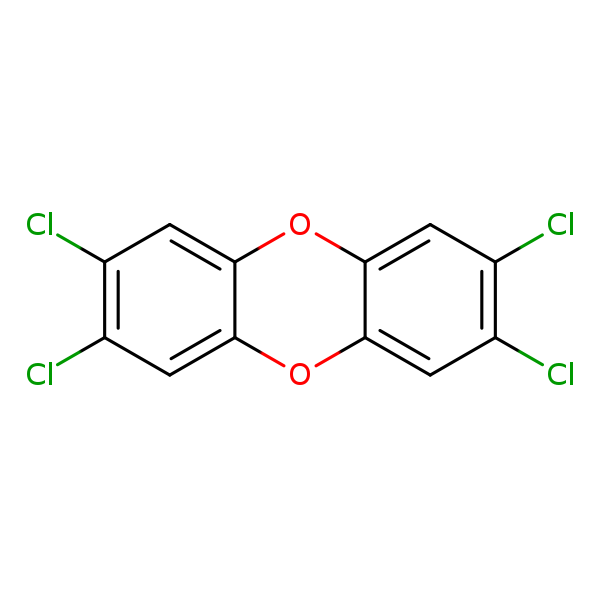2,3,7,8-Tetrachlorodibenzo-p-dioxin
CASRN 1746-01-6 | DTXSID2021315
- IRIS Summary (PDF) (16 pp, 146.5 KB, about PDF)
- 2,3,7,8-Tetrachlorodibenzo-p-dioxin Support Documents
Health Risk Assessment Approach for 2,3,7,8-Tetrachlorodibenzo-P-Dioxin (Draft)
Alert
Notice - This site contains archived material(s)
Archive disclaimer
Archived files are provided for reference purposes only.
The file was current when produced, but is no longer maintained and may now be outdated.
Persons with disabilities having difficulty accessing archived files may contact the IRIS Webmaster for assistance.
Please use the contact us form if you need additional support.
Overview
2,3,7,8-Tetrachlorodibenzo-p-dioxin (TCDD) is one of the most toxic and environmentally stable pollutants. In addition to various toxic effects, TCDD has been found to cause teratogenic, fetocidal, reproductive and carcinogenic effects in animals. In humans it adversely affects various organ systems and is probably carcinogenic as well. The report documents the methodologies utilized by the United States Environmental Protection Agency in its development of health risk assessment from exposure to TCDD.Download(s)
If you have a disability and the format of any material on our web pages interferes with your ability to access the information, please reach out to us using the Contact Us about IRIS form for assistance. To enable us to respond in a manner most helpful to you, please indicate the nature of the accessibility problem, the web address of the requested material, your preferred format in which you want to receive the material (electronic format (ASCII, etc.), standard print, large print, etc.), and your contact information.
Related Links
Critical Effect Systems
Chemical Structure for
2,3,7,8-Tetrachlorodibenzo-p-dioxin

Synonyms
- Dibenzo(b,e)(1,4)dioxin, 2,3,7,8-tetrachloro-
- Dibenzo-p-dioxin, 2,3,7,8-tetrachloro-
- Dioxin
- TCDD
- Tetrachlorodibenzodioxin
- Tetradioxin
- 1746-01-6
- 2,3,7,8-TCDD
- 2,3,7,8-Tetrachlorodibenzo(b,e)(1,4)dioxin
- 2,3,7,8-Tetrachlorodibenzo-1,4-dioxin
- 2,3,7,8-tetrachlorodibenzo-p-dixoin



